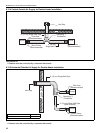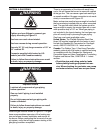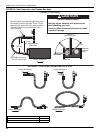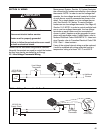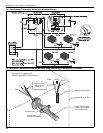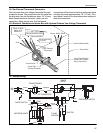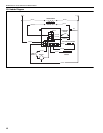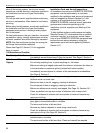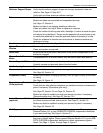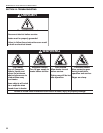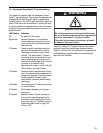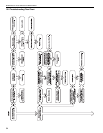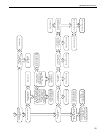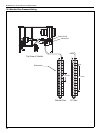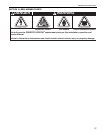
HE-SERIES INSTALLATION, OPERATION AND SERVICE MANUAL
50
ation of the heating system, service and annual
inspections must be done by a contractor qualified in
the installation and service of gas-fired heating
equipment.
Turn off gas and electric supplies before performing
service or maintenance. Allow heater to cool before
servicing.
Before every heating season, a contractor qualified in
the installation and service of gas-fired heating
equipment must perform a thorough safety inspec-
tion of the heater.
For best performance, the gas, electrical, thermostat
connections, tubing, venting, suspensions and over-
all heater condition should be thoroughly inspected.
NOTE: Gas flow and burner ignition are among the
first things that should be inspected.
Please see Page 50, Section 11.5 for suggested
items to inspect.
11.5 Maintenance Checklist
Installation Code and Annual Inspections:
All installation and service of ROBERTS GORDON
®
equipment must be performed by a contractor
qualified in the installation and service of equipment
sold and supplied by Roberts-Gordon LLC and
conform to all requirements set forth in the
ROBERTS GORDON
®
manuals and all applicable
governmental authorities pertaining to the
installation, service, operation and labeling of the
equipment.
To help facilitate optimum performance and safety,
Roberts-Gordon LLC recommends that a qualified
contractor conduct, at a minimum, annual inspec-
tions of your ROBERTS GORDON
®
equipment and
perform service where necessary, using only
replacement parts sold and supplied by Roberts-
Gordon LLC.
The Vicinity of the Heater Do not store or use flammable objects, liquids or vapors near the heater.
Immediately remove these items if they are present. See Page 6, Section 3.
Vehicles and Other
Objects
Maintain the clearances to combustibles.
Do not hang anything from, or place anything on, the heater.
Make sure nothing is lodged underneath the reflector, in between the tubes or
in the decorative or protective grilles (included with select models).
Immediately remove objects in violation of the clearances to combustibles.
See Page 6, Section 3.
Reflector Support reflector with reflector hanger and support strap.
Reflector must not touch tube.
Make sure there is no dirt, sagging, cracking or distortion.
Do not operate if there is sagging, cracking or distortion.
Make sure reflectors are correctly overlapped. See Page 24, Section 6.6.1.
Clean any debris from top and surface of reflectors with a damp cloth.
Check for evidence of animals such as squirrels or birds and remove any
nests prior to firing.
Vent Pipe Venting m
ust be intact. Using a flashlight, look for obstructions, cracks on the
pipe, gaps in the sealed areas or corrosion.
The area must be free of dirt and dust.
Remove any carbon deposits or scale using a wire brush.
Check for evidence of animals such as squirrels or birds and remove any
nests prior to firing. See Page 35, Section 8.
Outside Air Inlet Inlet mu st be intact. Look for obstructions, cracks on the pipe, gaps in the
sealed areas or corrosion.
The area must be free of dirt and dust. Clean and reinstall as required.



